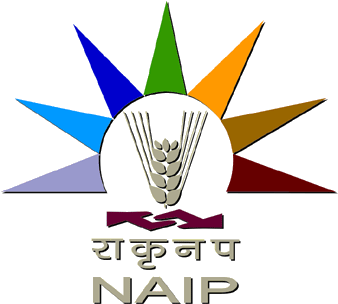National Agricultural Innovation Project(NAIP)

Farmers in India today are facing increasing challenges due to changing market trends and opportunities – they are not able to find agriculture to be as efficient or remunerative as it used to be in the past. Agricultural experts therefore feel that there is a strong need to align the requirements of the farmers and the traditional farming wisdom they possess with the knowledge base of scientists and experts who know about modern agricultural trends and practices. IITM’s RTBI in consultation with its partners felt that the primary way of being able to meaningfully assist farmers was by providing interactive, personalized farm-plot specific advice to farmers through a multi-lingual voice platform, enabled by the mobile phone. National Agricultural Innovation Project(NAIP) provided a platform to RTBI to implement this concept by sanctioning the sub-project ‘Development of ICT based Tools/Technology towards an Interactive Multimedia Agriculture Advisory system’. By using a couple of very well established trends such as user-generated content, end-user participation as well as more cutting edge technologies such as speech recognition, interactive voice response systems as well as multimedia web interfaces, the project today constitutes a platform, built around mobile phone communications, capable of delivering an interactive agriculture advisory that overcomes the excess data available on the Internet and preserves the relevance of information for farmers. This project began in January 2010 and is currently adding new dimensions to the agriculture advisory system that has been set up.
 Three districts of Kancheepuram, Dharmapuri and Erode districts of Tamil Nadu were chosen for implementing this project. The project was taken up in 40 villages in these three districts, which were chosen so as to cover a large fraction of the districts. In each village, about 10 small to medium farmers (includes Farmers Association, commodity group members) were included in the project. Though the total numbers of farmers to be supported during the implementation and trials was to be about 1200, sincere attempts were made to not leave any farmer who wished to participate. The project focused on providing advisories for nine crops – 3 from each district.These were
Three districts of Kancheepuram, Dharmapuri and Erode districts of Tamil Nadu were chosen for implementing this project. The project was taken up in 40 villages in these three districts, which were chosen so as to cover a large fraction of the districts. In each village, about 10 small to medium farmers (includes Farmers Association, commodity group members) were included in the project. Though the total numbers of farmers to be supported during the implementation and trials was to be about 1200, sincere attempts were made to not leave any farmer who wished to participate. The project focused on providing advisories for nine crops – 3 from each district.These were
(1)Dharmapuri

- Mango
- Tapioca
- Tomato
(2)Erode

- Turmeric
- Coconut
- Sugarcane
(3)Kancheepuram

- Paddy
- Brinjal
- GroundNut
Considering the growing reach of mobile phone communications, IITM’s RTBI, through this initiative, hopes to deliver to these farmers a unique and innovative way of receiving agricultural advisories very specific to their farm and plot. The initiative has managed to deliver the following.
Multimedia Advisory System : An innovative agri-advisory system has been set-up that is modeled along the lines of a modern day call-center, aiming to provide one-stop customer service. Some of the features of this system are:
a. Farmer specific dashboard through a web interface -Powered by a central database, an expert can look at a farmer-specific dashboard through a web interface. This displays the crop history of the current crop - phase of growth, inputs that have been used, pest infestations if any, etc. - enabling the expert to provide more relevant advisory. Expert can even update the information if need be, through the web interface, during interaction with farmer.
b. Call-center similarities - When the farmer calls through a mobile phone, the call lands onto the call-center advisory system, prompting the specific dashboard of the farmer to open up - this helps the expert to quickly provide farmer and crop-specific advisory.
Though the project has been completed, it has established the potential of the system and future research avenues include expanding the variety and quality of advice being offered by linking the present advisory system with off-site experts such as field-specific experts (entomologists, etc.), market experts and finance experts through a multi-party conferencing system

